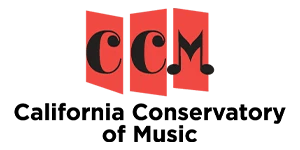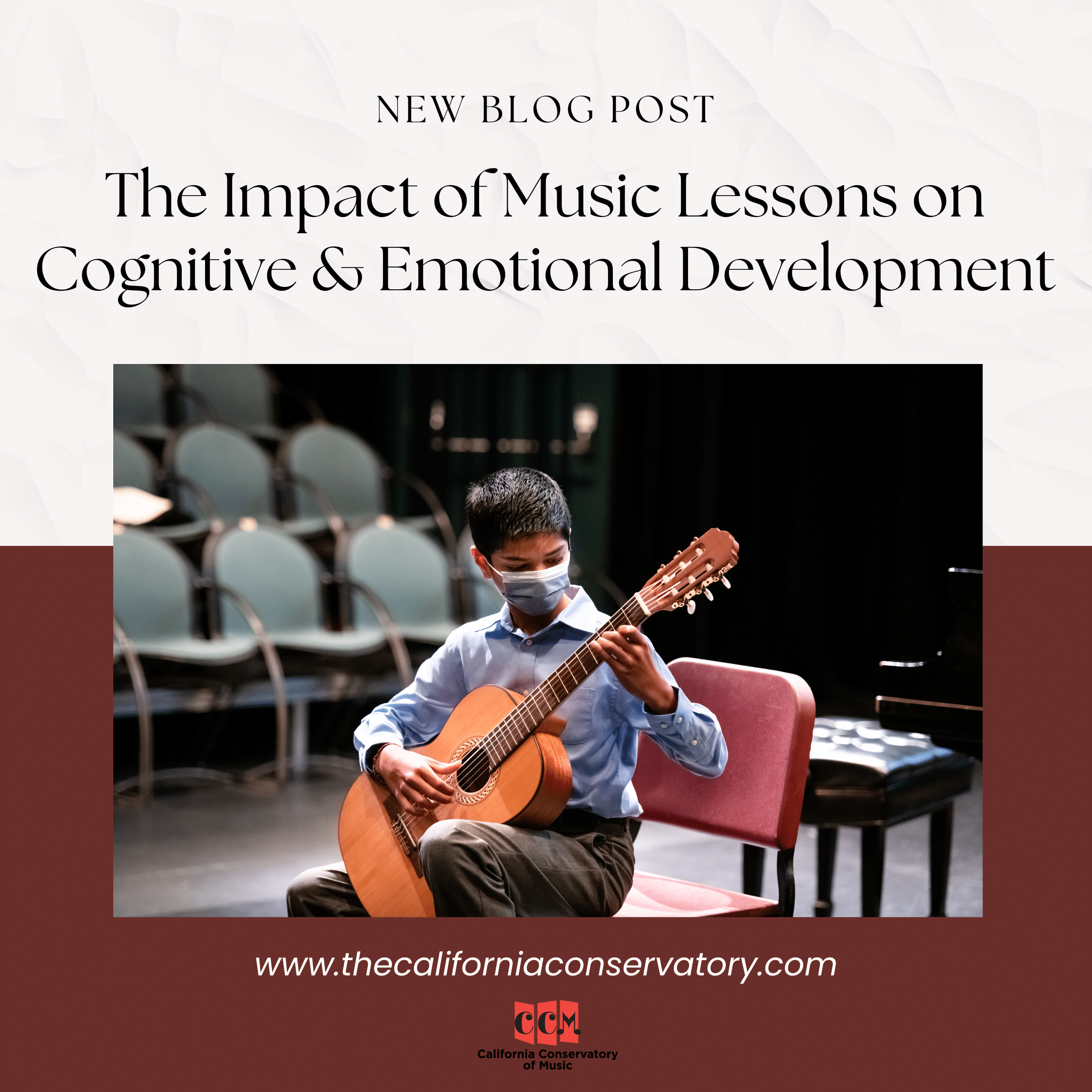May Student of the Month: Elijah Yap
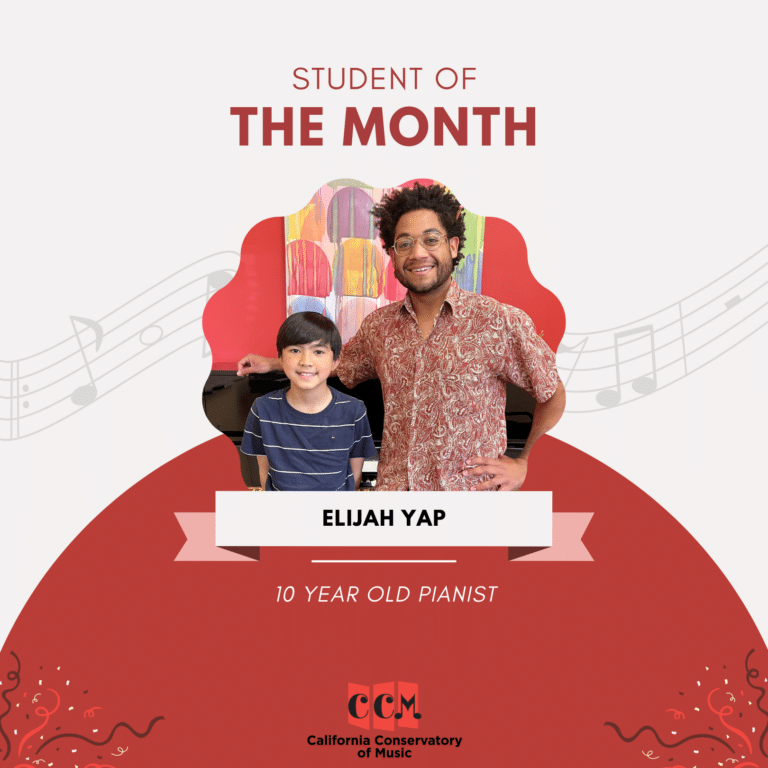
This May, we’re happy to spotlight CCM piano student, Elijah Yap, for our Student of the Month! Elijah has been taking piano lessons at CCM for 5 years. He currently studies at CCM’s Sunnyvale location with Teacher Dario. Elijah is always proactive with his practice! He is inquisitive in the lessons which enhances his learning experience that much more.
Student of the Month – Elijah Yap
What is your name?
My name is Elijah Rohan B. Yap.
How old are you?
I am 10 years old.
Who is your teacher?
My teacher is Teacher Dario.
How long have you been taking piano lessons?
I’ve been taking piano lessons at CCM since I was 5 years old.
What advice would you give to a piano student just starting out at CCM?
Keep practicing everyday and have fun and enjoy playing music.
What piece are you looking forward to learning someday?
I love to learn Kiss the Rain by Yiruma and more classical pieces like Canon in D by Pachelbel.
What is your favorite thing about playing piano?
My favorite thing about playing piano is that I get to play music that I like.
What is your favorite food?
My favorite food is a Filipino Escabeche that I personally call “vinegar fish soup.” It’s a fried fish cooked in a sweet and sour sauce.
Do you have a pet?
I have a Ball Python snake that I named Nagini from my favorite book and movie, Harry Potter.
Do you play any sports or do any other activities outside of music lessons?
I am not really into sports, but I sometimes play badminton and I play online games and spend time reading.
What do you want to be when you grow up?
I want to be a Cardiologist someday.
What is your most memorable experience at CCM?
My most memorable experience at CCM is participating in recitals and performing without mistakes.
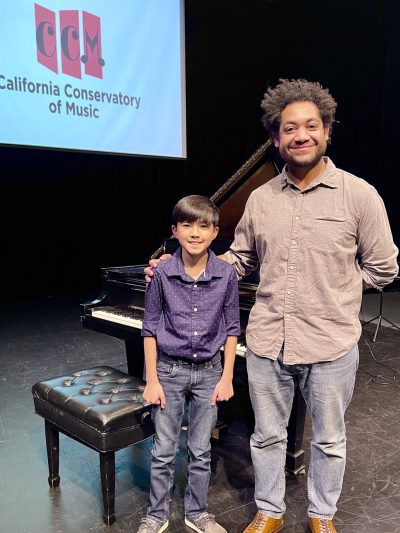
Parent Spotlight – Stella Yap
Regarding piano instruction, what are you most proud of your child accomplishing?
We are most proud of Elijah watching him play confidently at every recital in front of a lot of people and watching him work so hard and putting in a lot of effort and making sure he practices everyday and get every piece perfectly.
What advice would you give a new parent starting in the program?
Learning piano is a process that requires time. Try to be patient, and help your child to stay patient too. Encourage and motivate them to practice everyday, develop a routine but give your child the freedom to learn at their own pace, encourage them when they achieve new milestones, even if they’re just taking baby steps, and most importantly, let them have fun and make their music experience enjoyable.
Why did you decide to give your child a musical upbringing?
At a young age, Elijah already loved music and showed interest in learning how to play piano. In fact, he was the one who told us that he wanted to take piano lessons. As parents, we are here to support him and give him the opportunity to find passion and love on whatever that interests him, in this case, music. On the other hand, we know that learning music has a lot of benefits and can enhance every area of a child’s development.
Sign up for your free lesson at the California Conservatory of Music!

Music Education & Successful Public Figures
Music education is a proven crucial component in exceptional childhood development. Children who have had a music education have improved their cognitive skills, academic skills, emotional well-being, and more! Many public figures acknowledge that their early music education played a huge part in their overall success.
Music Education: A Brief Overview
Music education is the formal process of teaching music to students. This process can occur in different settings, including schools, private lessons, or community programs. It is designed to help students understand and appreciate music while developing their skills in playing musical instruments, singing, composing, or music theory.
A solid music education has several benefits for students.
- Cognitive skills: Music education is linked to enhanced memory, language, and reasoning skills. Students will improve their concentration, attention, and focus, which translates into better academic performance.
- Emotional skills: Music education also assists emotional development, such as empathy, self-esteem, and self-expression. It helps students manage stress and anxiety, as well as foster a sense of belonging and community.
- Social skills: Music education also encourages socialization and teamwork, as students often work together to create or learn music. It also promotes cultural awareness and respect for diversity.
Successful Public Figures
Over the years, many public figures have correlated their success with their early music education. These individuals are in various fields, including politics, business, science, and entertainment.
Albert Einstein
Albert Einstein was one of the most influential scientists of the 20th century. He developed the theory of relativity and made groundbreaking contributions to the field of physics. However, what many people may not know is that Einstein was an accomplished musician. He began playing the violin at the age of six and continued to play throughout his life!
Einstein once said, “If I were not a physicist, I would probably be a musician. I often think in music. I live my daydreams in music. I see my life in terms of music.” Einstein believed that music helped him to think creatively and abstractly, which he applied to his scientific work.
Steve Jobs
Steve Jobs, the co-founder of Apple Inc., is known for his innovative ideas and technological advancements. A little known fact is that Jobs was also a musician! He learned to play the guitar as a teenager and continued to play throughout his life.
Jobs believed that music helped him to think creatively and come up with new ideas. In a 1996 interview with Wired Magazine, he said, “If you want to be creative, you have to keep your mind open. And one of the ways to do that is to expose yourself to different experiences and different ways of thinking. Music was one of those things for me.”
Condoleezza Rice
Condoleezza Rice is a former United States Secretary of State and National Security Advisor. She is also an accomplished pianist and began playing at the age of three. Rice has spoken to how that music helped her develop discipline and focus, which she applied to her political career.
In an interview with NBC News, Rice said, “I think the lessons you learn from music are applicable to everything. It’s discipline. It’s focus. It’s the ability to work with others. All of those things are important in life, and certainly in leadership.”
Paul Allen
Paul Allen was a co-founder of Microsoft Corporation and one of the richest people in the world. He was also an artful musician and began playing the guitar at the age of 16. Allen felt that music helped him to think outside of the box and come up with innovative ideas, which he applied to his business ventures.
In an interview with The New York Times, Allen said, “I’ve found that playing guitar is a great way to escape from a stressful day at work. It’s a way to clear your mind and let your creativity flow. And sometimes, when you least expect it, that’s when the best ideas come.”
Yo-Yo Ma
Yo-Yo Ma is one of the most renowned cellists of our time. He began playing the cello at the age of four and has since won multiple Grammy Awards and performed in front of audiences worldwide. Ma believes that music helped him to develop discipline and perseverance, which he of course applied to his music career.
In an interview with The Guardian, Ma said, “Playing music requires a lot of hard work and dedication. It’s not something that you can just pick up and master overnight. But if you’re willing to put in the time and effort, the rewards can be amazing.”
Why Early Music Education Matters
The success of these public figures highlights the importance of early music education. Learning to play a musical instrument at a young age can have a significant impact on a child’s cognitive, emotional, and social development. Music education inspires discipline, focus, and creativity, as well as fosters a sense of belonging and community.
Moreover, music education can have long-term benefits for individuals, including improved academic performance, enhanced memory and language skills, and reduced stress and anxiety. It can also lead to a lifelong appreciation of music, which can bring joy and fulfillment to one’s life.
The correlation between public figures’ success and early music education should not be ignored. It is essential that we continue to prioritize music education in our schools and communities to ensure that all children have access to this valuable form of education.
Sign up for your free lesson at the California Conservatory of Music!

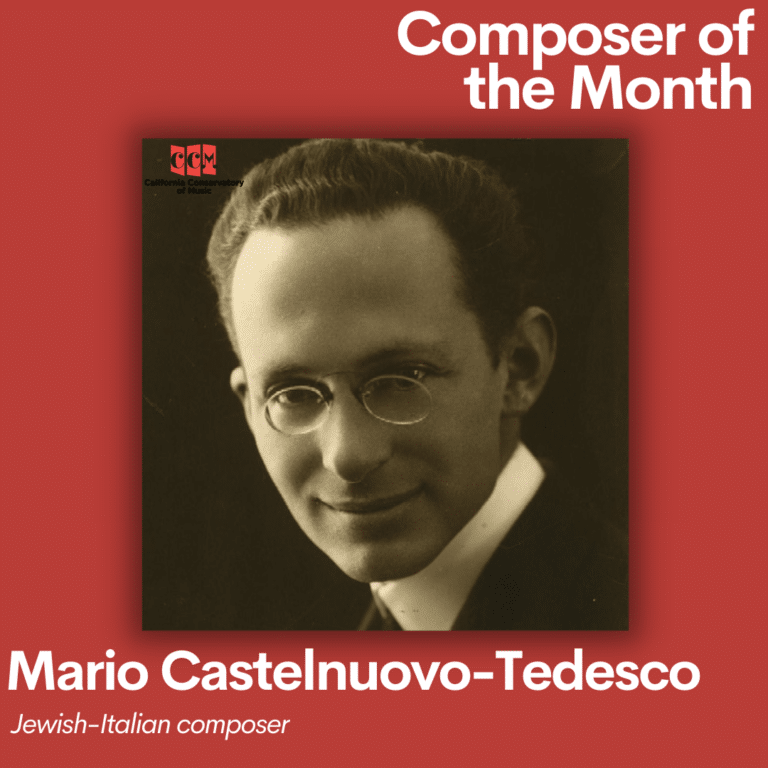
Mario Castelnuovo-Tedesco was an Italian composer and guitarist born in Florence on April 3, 1895. He was known for his prolific output of compositions, including operas, ballets, film scores, and chamber music. He was also an accomplished guitarist and wrote numerous works that have since become staples of the guitar repertoire.
Early Life and Education
Castelnuovo-Tedesco was born into a Jewish family in Florence. He showed a talent for music at a young age and began composing when he was only nine years old. His father was a successful businessman and encouraged his son’s musical pursuits. His father made sure to provide him with the best music education available at the time. Castelnuovo-Tedesco studied composition with Ildebrando Pizzetti and Carlo Rossini at the Liceo Musicale. Meanwhile, he was also working towards his piano degree in Florence.
Composer Career
In the early 1920s, Castelnuovo-Tedesco moved to Rome, where he quickly established himself as a leading composer. He was one of the founders of the Società Italiana di Musica Contemporanea (Italian Society of Contemporary Music), an organization dedicated to promoting new music in Italy. Additionally, he was a member of the influential Roman School of composers, which included Respighi, Casella, and Malipiero.
Throughout his career, Castelnuovo-Tedesco wrote music in a variety of genres, including operas, ballets, choral works, chamber, and orchestral music. Some of his most well-known works include the operas La Mandragola and The Importance of Being Earnest, the ballets The Cypresses Believe in God and L’Amore delle Tre Melarance, and guitar concertos No. 1 and No. 2.
Additionally, Castelnuovo-Tedesco was a prolific composer of film scores, particularly during his time in Hollywood. He composed the scores for over 200 films, including several for the well-known film producer, David O. Selznick, such as the score for the 1939 film version of Wuthering Heights.
Guitar Music
Castelnuovo-Tedesco was a passionate advocate for guitar and wrote more than 100 works for the instrument. He was particularly interested in exploring the guitar’s potential as a solo instrument.
One of Castelnuovo-Tedesco’s most popular guitar works is his 24 Caprichos de Goya, a set of character pieces inspired by the etchings of the Spanish painter Francisco Goya. Furthermore, one of the most frequently performed guitar concertos is his Guitar Concerto No. 1 in D Major. He also wrote several sonatas for guitar and various chamber works featuring the instrument.
Moreover, Castelnuovo-Tedesco’s interest in the guitar was partly due to his friendship with the Spanish guitarist Andrés Segovia. The two met in Rome in the 1920s, and Segovia later commissioned several works from Castelnuovo-Tedesco, including the aforementioned Guitar Concerto No. 1.
United States Career
In 1939, Italy implemented anti-Semitic laws and Castelnuovo-Tedesco emigrated to the United States with his family. Then, he settled in Los Angeles and began working in the film industry, where he quickly established himself as a successful composer of film scores. Despite his success, he continued to write concert music. In fact, he wrote many of his most important works during this time, including his Concerto for Two Guitars and Orchestra, his Sonata for Violin and Guitar, and his String Quartet No. 8.
In Los Angeles, Castelnuovo-Tedesco became part of a vibrant community of émigré artists and intellectuals, including Igor Stravinsky, Arnold Schoenberg, and Thomas Mann. Also, he continued to collaborate with Segovia, who often performed his guitar works in concerts around the world.
Despite his success in the United States, Castelnuovo-Tedesco never forgot his roots in Italy. He maintained close ties with Italian musicians and continued to write music inspired by Italian culture, such as his operas Il Mercante di Venezia and The Merchant of Prato.
Legacy
Castelnuovo-Tedesco died in Los Angeles on March 16, 1968. He left behind a rich legacy of music that continues to be performed and studied today. His music is known for its lyricism, color, and expressive power, and his contributions to the guitar repertoire have helped to establish the instrument as a legitimate concert instrument.
Recently, there has been a renewed interest in Castelnuovo-Tedesco’s music, particularly his guitar works. In 2015, the Italian guitarist Andrea De Vitis released a recording of Castelnuovo-Tedesco’s complete works for solo guitar. Similarly, in 2018, the Italian label Brilliant Classics released a 14-CD box set of his complete guitar music performed by various artists.
Sign up for your free lesson at the California Conservatory of Music!

April Student of the Month: Scarlett Fong
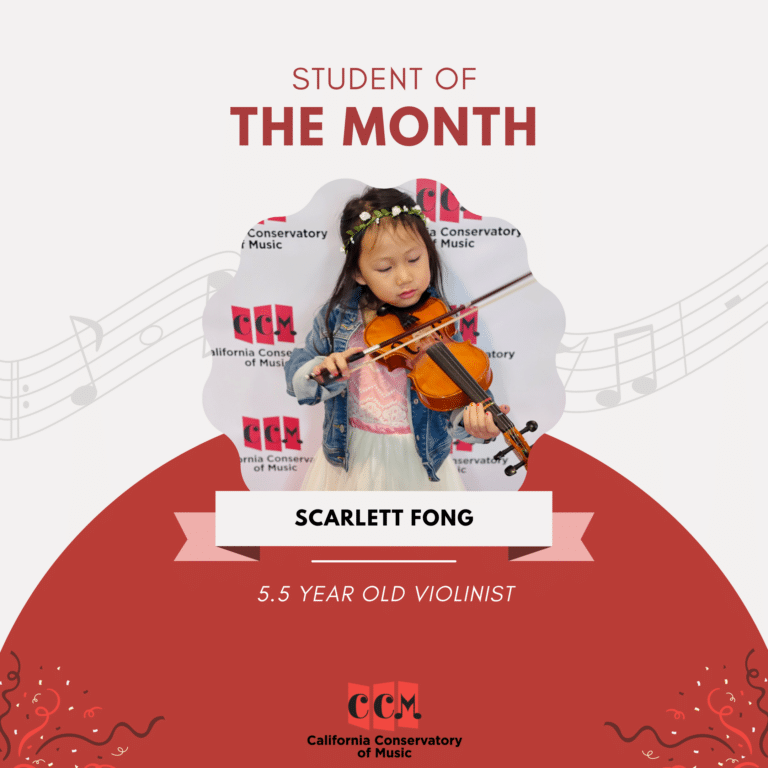
This April, we’re excited to feature CCM violin student, Scarlett Fong, as our Student of the Month! Scarlett has been taking violin lessons at CCM for just over a year. She currently studies at CCM’s Redwood City location with Teacher Emily. Scarlett has a natural gift of musicality and she’s always working hard to do her best in the lessons!
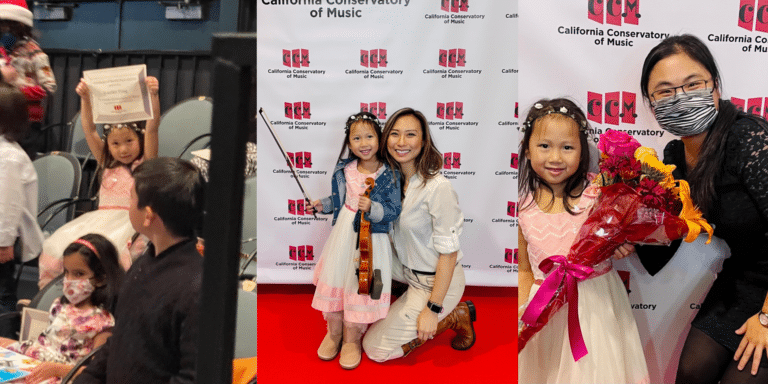
Student of the Month – Scarlett Fong
What is your name?
Scarlett Emerson Fong
How old are you?
5 1/2
Who is your teacher?
Ms. Emily
How long have you been taking violin lessons?
Since I was 4 years old. 1 year.
What advice would you give to a violin student just starting out at CCM?
That you can do it. Believe in yourself.
What piece are you looking forward to learning someday?
Something beautiful
What is your favorite thing about playing violin?
Performing for people.
What is your favorite food?
Pasta.
Do you have a pet?
No.
Do you play any sports or do any other activities outside of music lessons?
Ballet. Mandarin lessons. Tennis.
What do you want to be when you grow up?
A scientist and a violinist.
What is your most memorable experience at CCM?
My recital last year when I played dancing partners with Ms. Emily on stage.
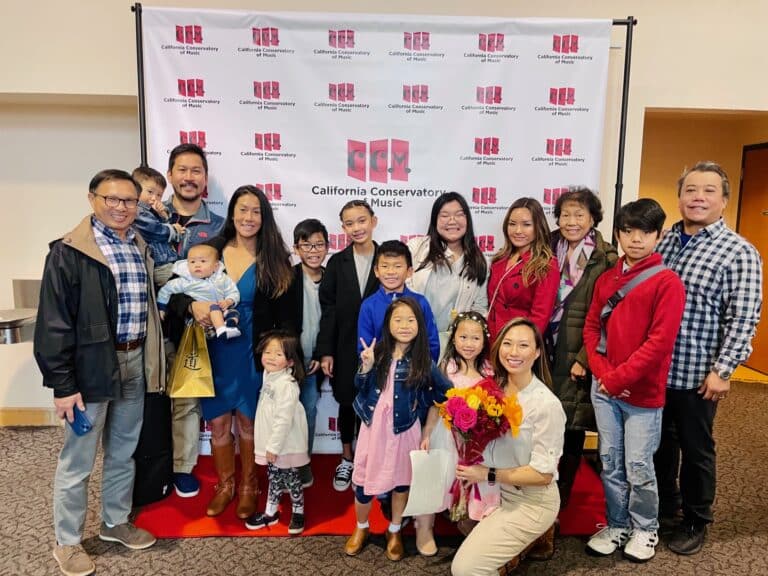
Parent Spotlight – Tiffany Fong
Regarding violin instruction, what are you most proud of your child accomplishing?
Violin has a very steep learning curve. The mental and tactile skills required are very challenging, and at times, can be very discouraging. She actually asked for a violin a few Christmases ago and was excited to play, but after starting and trying to learn, she wanted to quit. It was very hard. I’m most proud that she continues to persist even though it continues to challenge her. I am most proud that she tries to find the joy and fun in performing and doing it despite the many tears and frustration she has learning new things.
What advice would you give a new parent starting in the program?
It’s difficult to find the balance between pushing your child and letting them discover their passion on their own. I’ve framed violin as a responsibility that while not always fun, we must do to better ourselves. As is all things with our children, I am learning to be a better parent and guide too. There are important lessons in persistence, but also times when we can listen and give our child breaks or passes.
Why did you decide to give your child a musical upbringing?
She actually asked to play violin because I used to play. I had planned to put her in lessons later, but figured she was ready if she was interested. I think music is a really beautiful and personal avenue of expression. It’s a gift when parents provide those lessons and open doors for those skills. I’ve never met an adult who regrets knowing how to play an instrument or sing.
Gioachino Rossini: April Composer of the Month
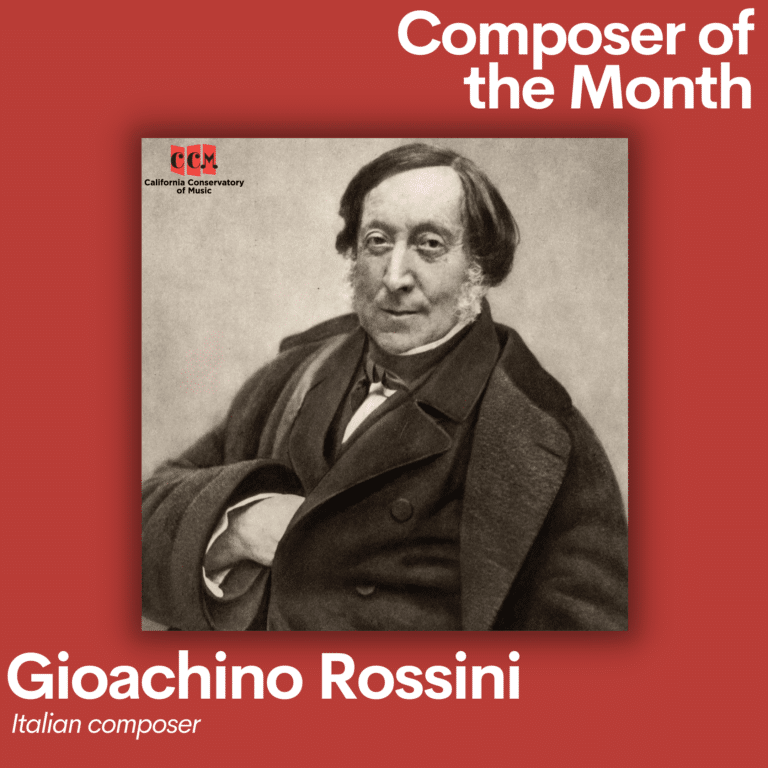
Gioachino Rossini is one of the most renowned Italian composers of the 19th century. His work influenced opera tremendously and he is considered to be one of the greatest composers of the bel canto era. Rossini’s melodic beauty, dramatic intensity, and sparkling wit are notable aspects of his music.
Early Life
Gioachino Rossini was born on February 29, 1792, in Pesaro, Italy. Rossini grew up surrounded by music. His father, Giuseppe Rossini, was a horn player and his mother, Anna Guidarini, was a singer. It was clear that Rossini possessed musical talents at an early age, and he began studying with his father and other local musicians. By the age of 12, Rossini was already composing music as well as playing the piano and violin.
In 1806, Rossini was accepted into the prestigious Liceo Musicale in Bologna. There, he studied with the composer and musicologist Padre Stanislao Mattei. He was a strict instructor who emphasized the study of counterpoint. Rossini learned valuable skills from Mattei, but he was still eager to explore new musical styles and techniques.
Early Works
Rossini’s composed his first opera, La Cambiale di Matrimonio, when he was only 18 years old. The modest success of the opera encouraged him to continue composing. Over the next few years, Rossini wrote a series of comic operas that established his reputation. These included L’italiana in Algeri (1813), Il Turco in Italia (1814), and Il Barbiere di Siviglia (1816).
Il barbiere di Siviglia (The Barber of Seville) is arguably Rossini’s most famous opera. It is a comic masterpiece that follows the story of the wily Figaro, as he helps the young Count Almaviva win the heart of beautiful Rosina. The opera is full of memorable melodies, witty dialogue, and clever plot twists. The aria, “Largo al Factotum,” sung by Figaro, is one of the most universally famous and recognizable pieces of music to date.
Gioachino Rossini’s success with comic operas earned him the nickname, Il Signor Crescendo (Mr. Crescendo), because of his skillful use of crescendo in his music. He mastered the use of crescendo as he built tension and excitement in the music with the dynamics.
Later Works
In the 1820s, Rossini began to stray away from comic opera and move towards more serious works. He composed a series of tragic operas, including Otello (1816), La Donna del Lago (1819), and Semiramide (1823). While these operas were well-received, they did not achieve the same level of success as his comic operas.
By 1829, at the age of 37, Rossini retired from composing operas. He had achieved great success as a composer, but he was exhausted from the demands of the opera world.
Rossini moved to Paris in 1832, where he became a central figure in the city’s musical life. He composed a series of works for the Parisian stage, including the opera Guillaume Tell (William Tell), which premiered in 1829. Guillaume Tell was Rossini’s last opera and is considered by many to be his masterpiece. The opera tells the story of the Swiss folk hero William Tell, as he leads a rebellion against the Austrian oppressors. It features a number of well-known arias, including the famous overture, which is frequently heard in popular culture.
Rossini’s later works show a departure from the bel canto style of his earlier operas. He began to experiment with new forms and musical techniques, such as the use of the chorus and the integration of spoken dialogue. As he became interested in French opera, his later works showed the influence of French composers such as Gluck and Meyerbeer.
Legacy
Gioachino Rossini’s influence on the opera cannot be overstated. His comic operas are still performed today and continue to delight audiences with their wit and humor. His serious operas, while less well-known, are still admired for their dramatic power and musical sophistication.
In addition to his opera contributions, Rossini was also an important figure in the development of orchestral repertoire. He composed several overtures and other instrumental works that are still performed today. His overtures, in particular, are known for their lively rhythms and catchy melodies.
Rossini’s influence can be seen in the work of many later composers as well. His use of the crescendo, for example, was adopted by composers such as Wagner and Verdi. His tuneful melodies and lyrical style were also influential on composers such as Donizetti and Bellini.
Sign up for your free lesson at the California Conservatory of Music!
Approaching Music Education like Learning a Language
The processes of learning an instrument and a language are very similar. Both involve commitment, exposure, and consistency. One of the most significant similarities is that they both require frequent practice to become proficient. Approaching music education like learning a language can be an effective way to learn and develop musical skills.
Similarities Between Music and Language
One of the most obvious connections between music and language is that they both involve communication. In language, we communicate through speaking and writing, while in music, we communicate through sound. However, when you learn how to play an instrument, you are also learning how to read music, which is a language in and of itself! These forms of communication, both musical and linguistic, express emotion, convey ideas, and tell stories.
Both music and language require practice and repetition to become proficient. Learning a language involves listening, speaking, reading, and writing regularly to improve comprehension and fluency. Similarly, learning music involves practicing scales, chords, and techniques to improve performance and musicality. The Suzuki method is very effective because it takes advantage of these similarities. Suzuki students prioritize listening to the Suzuki repertoire and other music to familiarize themselves with their instrument.
Another fun similarity is that music and language both have their own unique grammar and structure. In language, we use syntax, grammar rules, and vocabulary to create sentences and convey meaning. In music, we use harmony, melody, and rhythm to create musical phrases and convey emotion.
Methods for Learning
When learning a language, there are several methods that can be used to improve fluency and comprehension. These methods can also be applied to learning an instrument for an effective education.
Immersion
Immersion involves being surrounded by the language. This looks like watching shows or listening to podcasts in the language you are learning, or traveling to another country. This method is also extremely helpful when applied to music education. For example, attending concerts, watching videos, and listening to music can immerse you in different styles and genres of music. This can help you to develop an ear for different sounds and rhythms, as well as an appreciation for the cultural significance of music.
Practice
One of the most, if not the most, important aspects of learning a language or instrument is regular practice. Regular practice is essential to developing one’s skills, such as physical technique, tone production, rhythm, and more. Setting aside time each day to practice scales, arpeggios, and songs can help you to improve your musical abilities over time. Not only does practice help with progress, it also will help build confidence!
Listening
When learning a language, it’s important to listen to native speakers to improve comprehension and pronunciation. Similarly, when learning music, it’s important to listen to professional musicians to develop an ear for tone, phrasing, and expression. Listening to music can also help you to develop a sense of style and genre, and assist you in finding out what you like!
Reading
Reading is another form of immersion, but it’s important enough to be its own method. With language, reading helps improve comprehension and vocabulary. Similarly, reading sheet music helps musicians improve their sight-reading skills, as well as their understanding of music theory and structure.
Applying Language Acquisition Strategies to Music Education
Build a Solid Foundation
When learning a language, it’s important to start with the basics, such as vocabulary, grammar, and pronunciation. Similarly, when learning an instrument, you must build a strong foundation and review scales, arpeggios, and chord progressions. These fundamentals provide the foundation for more advanced musical skills, such as improvisation and composition.
Imitate
Imitation is a common language acquisition strategy that involves mimicking native speakers to improve pronunciation and fluency. When learning an instrument, you’ll improve by imitating other musicians, or their teachers. This involves listening to recordings, watching videos, and attending concerts. By imitating their phrasing, dynamics, and expression, musicians can learn to play with greater musicality and emotion.
Develop a Music Vocabulary
Just as language learners need to develop a vocabulary of words and phrases, musicians need to develop a musical vocabulary of scales, chords, and tempo markings, and more. It’s important to learn and understand these terms early on so that you can continue to make steady technical progress.
Practice Regularly
Regular practice is essential. To make progress, musicians should set aside dedicated time each day to practice their instrument and work on improving their skills. This regular practice can help to develop muscle memory and improve technical proficiency, as well as build confidence and musicality. Practice sessions that are only 10-minutes are still more beneficial than none at all!
Get Feedback
Getting feedback on your performance can help you to identify areas for improvement and refine your technique and musicality. This feedback can come from teachers, peers, and parents, or even from recording and listening to your own performances.
Approaching music education like learning a language is an effective way to learn an instrument and enjoy doing it! Whether you’re a beginner or an experienced musician, applying these strategies can help you reach new levels of musical ability and creativity.
Sign up for your free lesson at the California Conservatory of Music!

March 2023 Student of the Month – Chelsea Listwin

This March, we’re so happy to feature CCM voice student, Chelsea Listwin, as our Student of the Month! Chelsea has been taking voice lessons at CCM for around 6 months. She currently studies at CCM’s Redwood City location with Teacher Kaori. Chelsea is always working hard to improve and she just landed the role of Sandy in her school’s production of Grease the Musical – congrats Chelsea!
Student of the Month – Chelsea Listwin
What is your name?
Chelsea Listwin
How old are you?
13
Who is your teacher?
Kaori Denoia
How long have you been taking voice lessons?
6 months with Kaori Denoia and a year with some other teachers.
What advice would you give to a voice student just starting out at CCM?
Don’t be afraid that other students can hear you through the walls, just sing!
What song are you looking forward to learning someday?
Raining on Prom Night from Grease the Musical.
What is your favorite thing about singing?
I can express myself without saying how I feel.
What is your favorite food?
Pizza.
Do you have a pet?
Yes, I have 3 dogs and a cat. Donner, my Bernese Mountain dog is my dog and my favorite.
Do you play any sports or do any other activities outside of music lessons?
I perform flying trapeze and Lyra in the Circus Arts and my school musical.
What do you want to be when you grow up?
Happy.
What is your most memorable experience at CCM?
When a parent listening outside the room complimented me on my singing.
……………………………………………………………………………………………………………………
Parent Spotlight – Hilary Valentine
Regarding voice instruction, what are you most proud of your child accomplishing?
Chelsea just landed the lead role of Sandy in her school musical, Grease.
What advice would you give a new parent starting in the program?
Let your child’s interest be your guide. Let them lead you, don’t push them into something that you want for them that they might not want for themselves.
Why did you decide to give your child a musical upbringing?
We discovered Chelsea’s natural singing ability at a very young age around 5 or 6. We were told that it would be up to her if she wanted to develop her raw talent. A few years later, she asked for voice lessons and we have supported her in this interest ever since. And, because music is life.
March Composer of the Month – Tania León
![ComposerMusician of the Month [POST] (1) Tania León composer of the month](https://thecaliforniaconservatory.com/wp-content/uploads/elementor/thumbs/ComposerMusician-of-the-Month-POST-1-1-qmty6wxa1r6clq4nn2djflsue696xsgu4bjn2gm8og.png)
This March, we are highlighting Tania León as our composer of the month. León is a highly respected composer, conductor, and educator. Her works have been performed by leading orchestras and ensembles around the world. Born in Havana, Cuba in 1943, she moved to the United States in 1967 to pursue her musical studies. She has since become one of the most influential and innovative composers of her generation.
León’s music is widely diverse as it includes a variety of cultural influences, including African, Latin American, and Western classical traditions. Her compositions famously consist of rhythmic complexity, rich harmonies, and a vibrant use of color and texture. Her works range from larger orchestral pieces to intimate chamber music. She also often incorporates elements of improvisation and electronic music.
Early Career
Music surrounded León while she grew up in Cuba and she started playing the piano at the age of four. Her mother was a pianist, and her father was a writer, poet, and politician. Her family was part of Havana’s intellectual and artistic elite, and they were active in the city’s cultural scene.
When León moved to America in 1967 to pursue her musical studies, she became a rising star in classical music. She studied composition with renowned composers George Perle and Ralph Shapey, and worked with jazz pianist and composer Ran Blake.
León’s music has a wide range of influences. She takes inspiration from her Cuban heritage, her classical training, and her experiences as a woman of color in America. Her compositions often explore themes of identity, community, and social justice. Additionally, she has been a strong advocate for diversity and inclusion in classical music.
Notable Works
One of León’s most celebrated works is “Indígena,” a piece for orchestra that incorporates pre-Columbian instruments and rhythms. The New York Philharmonic commissioned and premiered the piece in 1991. It is now a staple of their orchestral repertoire! “Indígena” is a powerful testament to the rich cultural Indigenous heritage of the Americas and highlights different musical traditions.
Another notable work by León is “A la Par.” This is a piece for chamber ensemble that explores both Cuban and American musical traditions. The Chamber Music Society of Lincoln Center commissioned the piece and it premiered in 1998. “A la Par” is a testament to León’s commitment to celebrating diversity in her music as well as her heritage.
Other Endeavors
In addition to her work as a composer, León has been an active conductor and educator. She served as a guest conductor for many leading orchestras, including the New York Philharmonic, the Los Angeles Philharmonic, and the National Symphony Orchestra. She has also taught at institutions such as Brooklyn College and the Yale School of Music. In addition to teaching positions, she mentored many aspiring composers and musicians.
León’s dedication to education and mentorship derives from her own experiences as a young musician. She has spoken openly about the challenges she has faced as a woman of color in the classical music world, and is a vocal advocate for greater diversity and inclusion in the field. In an interview with NPR, she said, “I want to make sure that other people have the opportunities that I’ve had – That they can be respected for who they are, and that they can contribute their own voices to the world of music.”
León’s influence extends far beyond the genre of classical music. She has collaborated with artists in a wide range of genres, including jazz, pop, and hip-hop. She has worked with notable artists such as Paquito D’Rivera, John Legend, and Common, and is a frequent collaborator with the jazz pianist and composer Geri Allen.
Tania León Today
In recent years, León has continued to push the boundaries of classical music, incorporating new technologies and interdisciplinary approaches into her work. She has collaborated with video artists and dancers to create multimedia performances and has even explored the use of virtual reality in music composition.
León’s impact on the classical music world has been profound, both as a composer and an advocate for diversity and inclusion. She has paved the way for generations of young composers and musicians, and her music continues to inspire and challenge audiences around the world.
Sign up for your free lesson at the California Conservatory of Music!

Prioritizing Music Practice with a Busy Schedule
As a parent, you want your children to get the most out of their music lessons, which means consistent music practice. However, with busy schedules, it can be a challenging task to prioritize music practice. It is essential to have a plan or routine in place that ensures your child has enough time to practice, while also allowing them to participate in other activities and have downtime.
We’ve put together some tips for how make music practice a priority in your child’s busy schedule:
1. Set a Schedule
Following a schedule, as much as you can, is the best way to ensure your child gets the necessary time to practice music. Having a set time for practicing each day will help embed a routine and you’ll find that you no longer have to remind your child to practice.
2. Break it up into Small Sessions
It’s easier for children to focus when practice is broken up into smaller sessions. Instead of one long practice session, break it up into two or three shorter sessions throughout the day – even 10 minutes will suffice! This will allow your child to concentrate better during practice, and they will be less likely to become bored or frustrated.
3. Set Goals
Setting goals is a great way to maintain consistent motivation for practice. These goals can be short-term or long-term, and they should be achievable and exciting for your child. Encourage your child to write down their goals and track their progress on their own. This will help them gain independence over the practice and feel a sense of accomplishment when they reach their goals.
4. Encourage Independence
As your child gets older, encourage them to become more independent in their music practice. This may mean allowing them to practice on their own without your supervision and set their own goals, as previously mentioned. This will help them develop a sense of responsibility and pride over their music practice.
5. Use Technology
Technology can be a useful tool for prioritizing music practice. There are many apps and online resources available that can help your child stay organized and motivated. For example, Practice Space is a great app for tracking practice, homework, and setting goals. Teachers can even upload multimedia files into your child’s assignments so that there’s no confusion on what to practice. Ask your teachers about Practice Space!
6. Incorporate Music into Daily Life
Your child’s exposure to music doesn’t have to be limited to practice sessions. You can incorporate music into your child’s daily life by playing music in the car or throughout the house. This will help your child develop a love for music and may inspire them to keep music in their life.
7. Find a Practice Buddy or Audience Member
Practicing with a friend or family member can make music practice more fun and motivating. Assist your child in finding a practice buddy who plays the same instrument or who enjoys playing music in general. They can practice together and motivate each other to improve. If you can’t find a practice buddy, provide your child with a family member or friend who can act as an audience member. When your child finishes learning a piece they are proud of, it can be extra motivating to perform it for someone close to them.
8. Be Flexible
While it’s important to have a schedule in place, it’s just as important to be flexible. There may be times when your child’s schedule changes, and they can’t practice as much as they usually do. Instead of becoming frustrated, be flexible and adjust the schedule as needed. Remember that music practice should be enjoyable and sometimes challenging, but not stressful. If your child becomes overwhelmed, don’t hesitate, to ask their teacher to lessen the workload for a few weeks until your schedule gets back on track.
9. Check In
It’s essential to check in with your children about what gets them excited about music lessons. Encouraging your children to speak positively about their activities will manifest into engagement and motivation during music practice and lessons! Having these conversations will also remind your children that this is meant to be an uplifting experience for them.
10. Celebrate Success
Finally, it’s imperative to celebrate your child’s success. Whether it’s mastering a new piece of music or achieving a short-term goal, make sure to acknowledge and celebrate your children’s accomplishments. This will help them stay motivated and feel proud of their achievements. Plus, it’ll remind them that you are on their side when it comes to music practice!
Prioritizing music practice with a busy schedule requires a plan and commitment. We hope these tips were helpful to you and your children and we encourage you to be creative when it comes to the challenge of prioritizing music lessons and practice.
Sign up for your free lesson at the California Conservatory of Music!

Benefits of Music Lessons
Check out the video blog below on the benefits of music or continue reading for the full blog!
Music education is a fun and enjoyable experience for children, but also has a beneficial impact on their cognitive development and academic performance. Many studies have shown that having regular music lessons can improve skills, such as memory, attention, and spatial-temporal reasoning. Read below for more info on the benefits of music!
Spatial-temporal reasoning helps with mental rotation and visualizing the movement of objects, which can be exceptionally useful for math and science. Research findings also suggest that music lessons can help children develop more effective problem-solving and critical-thinking skills.
Additionally, music lessons have a direct correlation with academic performance. Studies have shown that children who received regular music instruction for at least one year scored higher on reading and math tests compared to those who did not take music lessons.
Children’s memory and attention skills are also improved with music instruction. Musicians have a better working memory capacity than non-musicians and this is due to the fact that playing music requires a lot of focus and concentration. This is instilled through regular practice and paying close attention to the notes and rhythms. Over time, this can help improve the ability to focus and retain information, which assists in successful learning in other subjects as well.
Music lessons don’t only impact cognitive skills, they also positively affect children’s emotional well-being. Playing an instrument instills confidence and good self-esteem for children. Performing in front of an audience gives them the opportunity to showcase their skills and take pride in their accomplishments. This helps build their confidence and make them feel more self-assured, which ensures a positive well-being overall.
If you’re looking for a way to help your child grow and develop, consider enrolling them in music lessons today at the California Conservatory of Music.
Sign up for a free lesson here!
References:
“Frontiers in Psychology” (2014)
“PLoS ONE” (2011)
“Journal of Neuroscience” (1997)
“Frontiers in Neuroscience” (2015)
Subscribe to our YouTube Channel for more!
